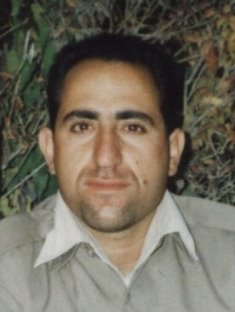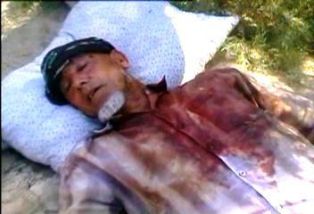
Author: Lionel Beehner
Introduction
Although Iran’s state religion is Shiite Islam and the majority of its population is ethnically Persian, millions of minorities from various ethnic, religious, and linguistic backgrounds also reside in Iran. Among these groups are ethnic Kurds, Baluchis, and Azeris. Many of them face discrimination and live in underdeveloped regions. Though they have held protests in the past, they mostly agitate for greater rights, not greater autonomy. Most are integrated into Iranian society, participate in politics, and identify with the Iranian nation. Tehran occasionally criticizes the United States and Israel for stirring up trouble among its large ethnic groups but the extent of outside involvement with these groups is not clear.
Although Iran’s state religion is Shiite Islam and the majority of its population is ethnically Persian, millions of minorities from various ethnic, religious, and linguistic backgrounds also reside in Iran. Among these groups are ethnic Kurds, Baluchis, and Azeris. Many of them face discrimination and live in underdeveloped regions. Though they have held protests in the past, they mostly agitate for greater rights, not greater autonomy. Most are integrated into Iranian society, participate in politics, and identify with the Iranian nation. Tehran occasionally criticizes the United States and Israel for stirring up trouble among its large ethnic groups but the extent of outside involvement with these groups is not clear.
What are Iran’s predominant minority groups?
Iran has small pockets of Baha’i, Turkmen, Christian, and Jewish communities, but its primary ethnic minorities are:
Azeris. Roughly one out of every four Iranians is Azeri, making it Iran’s largest ethnic minority at over eighteen million (some Azeris put the number higher). The Turkic-speaking Azeri community is Shiite and resides mainly in northwest Iran along the border with Azerbaijan (whose inhabitants are more secular than their Azeri cousins in Iran) and in Tehran. Although they have grievances with the current regime in Tehran, most Azeris say they are not treated as second-class citizens and are more integrated into Iranian society, business, and politics (the Supreme Leader is an ethnic Azeri) than other minorities. A common complaint among Azeris is they are often poked fun at by the Iranian media. Last May, violent demonstrations broke out in a number of northwest cities after a cartoon published in a state-run newspaper compared Azeris to cockroaches.
Kurds. Predominantly Sunni, the Kurds reside mainly in the northwest part of the country—so-called Iranian Kurdistan—and comprise around 7 percent of Iran’s population (there are roughly four million Kurds living in Iran, compared to twelve million in Turkey and six million in Iraq). Unlike Iran’s other minorities, many of its Kurds harbor separatist tendencies, creating tensions with the state that have occasionally turned violent (the largest in recent years occurred in response to Turkey’s February 1999 arrest of Abdullah Ocalan, then-leader of the Kurdistan Workers' Party). The governments of Turkey and Iran fear the creation of a semiautonomous state in northern Iraq might motivate their own Kurdish minorities to press for greater independence. But Kaveh L. Afrasiabi, a U.S.-based expert on Iranian foreign policy, says Iran’s concern about Kurdish separatism does not approach the level of Turkey’s. Still, there have been repeated clashes between Kurds and Iranian security forces, the most recent of which was sparked by the July 2005 shooting of a young Kurd. Some experts say Israel has increased its ties with Iranian Kurds and boosted intelligence-gathering operations in northwest Iran to exploit ethnic fissures between the
Kurds and the majority Shiite Persians.
Arabs. Along the Iranian-Iraqi border in southwest Iran is a population of some three million Arabs, predominantly Shiite. Arabs, whose presence in Iran stretches back twelve centuries, commingle freely with the local populations of Turks and Persians. During the 1980s, they fought on the side of the Iranians, not the Iraqi Arabs. However, as Sunni-Shiite tensions have worsened in the region, a minority of this group, emboldened by Iraqi Arabs across the border, has pressed for greater autonomy in recent years. In the southern oil-rich province of Khuzestan, clashes erupted in March 2006 between police and pro-independence ethnic Arab Iranians, resulting in three deaths and over 250 arrests (the protests were reportedly organized by a London-based group called the Popular Democratic Front of Ahwazi Arabs). In April 2005, rumors spread that the authorities in Tehran planned to disperse of the area’s Arabs, leading to protests that turned violent, according to Human Rights Watch.
Baluchis. Iran has roughly 1.4 million Baluchis, comprising 2 percent of its population. Predominantly Sunni, they reside in Baluchistan, a region divided between Pakistan and Iran. The southeastern province where Baluchis reside remains the least developed part of Iran and boasts high unemployment rates. That, plus the porous border between the two countries, has encouraged widespread smuggling of various goods, including drugs. Iranian Baluchistan, despite holding few resources, remains an important region militarily because of its border with Pakistan. Earlier this year the Iranian government built a military base there. Tehran has kept a watchful eye on Baluchi militants in the region. In March, a group called Jundallah attacked a government motorcade (which left twenty people dead), kidnapped a number of hostages, and executed at least one member of Iran’s Revolutionary Guards.
What are these groups’ grievances with the Iranian government?
Although the Iranian constitution guarantees the rights of its religious and ethnic minorities, many of these groups say they face discrimination. They say some schools do not teach their languages (as the constitution requires), they are denied government jobs, and their regions are neglected by the state, resulting in above-average unemployment. A February 2006 Amnesty International report points to land and property confiscations, restrictions on movement, and unlawful imprisonments of ethnic minorities. Iran’s Sunni population, which includes Kurds and Baluchis, complain there is not a single Sunni mosque in the country (the authorities reportedly blocked one from recently being built in Tehran) and the government has barred public displays of Sunni religion and culture.
How has the Iranian government responded to ethnic unrest?
In general, the authorities in Tehran downplay differences and grievances among Iran ’s ethnic groups. But most experts and rights monitors say the state marginalizes its minorities, puts down demonstrations with force, and extracts public confessions from those it suspects of initiating unrest, executing those ethnic minorities found guilty. A. William Samii, regional analysis coordinator at Radio Free Europe/Radio Liberty, writes in the Christian Science Monitor that the typical government response is “a combination of repression and scapegoating.” In 1981, for instance, an Azeri uprising in the northwest city of Tabriz was put down violently, resulting in the executions of dozens of Azeris. More recent demonstrations by Arabs in the southwest province of Khuzestan have been blamed on the British, Samii says, because of their military presence across the border in Iraq and the historical role of British oil companies like Shell in the region (90 percent of Iran’s oil is located in Khuzestan).
What role does the United States play with these groups?
There are mixed accounts about U.S. affiliations with such groups. Seymour M. Hersh reports in the New Yorker the Pentagon has established “covert relationships” with many of Iran’s minority groups and “has encouraged their efforts to undermine the regime’s authority in northern and southeastern Iran.” Although many of these minority groups have satellite offices in the United States (as well as in Europe), some experts remain doubtful. Although the Pentagon and Kurds in the region have longstanding ties, Afrasiabi doubts the United States will assist the Kurdish desire for greater autonomy.
“The Iranians believe the United States is not foolish enough to push this arc of Kurdish separatism in Iran too far because of the compounding effect this would have on regional security issues,” he says. But whenever demonstrations break out among Iran’s minorities, Tehran blames foreign agitators, says RFE/RL’s Samii. “In the May 19 Friday Prayers sermon in Tehran, which was broadcast across the country by state radio, Ayatollah Mohammad Emami-Kashani pinned southeastern [Baluchi] violence on the United States and Israel.”



























































No comments:
Post a Comment